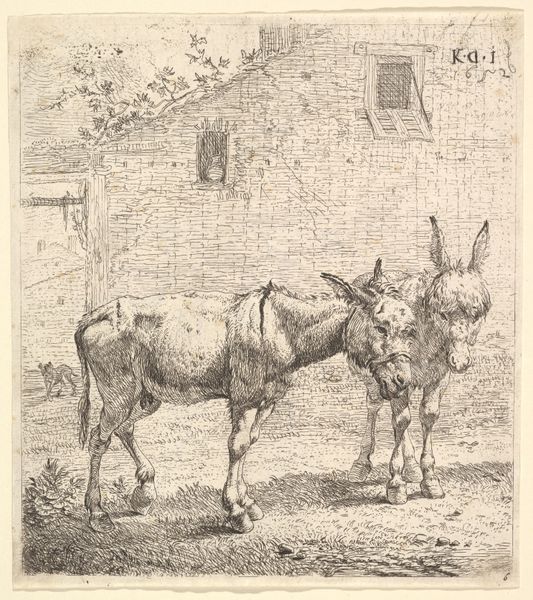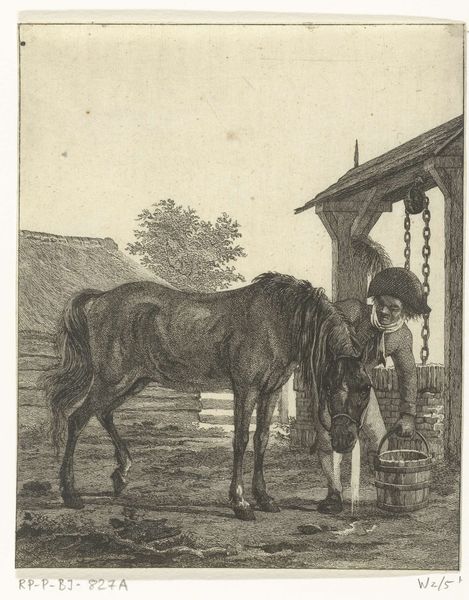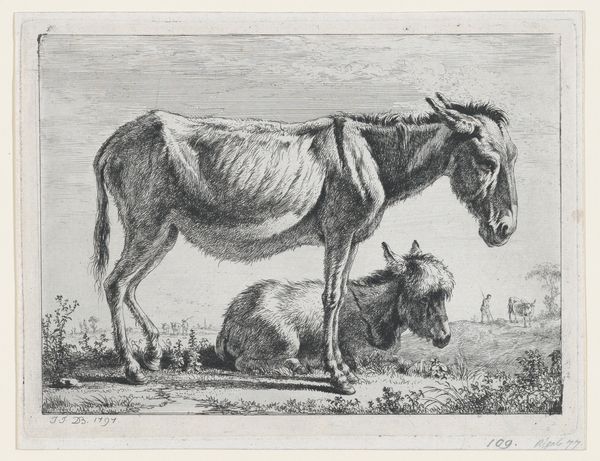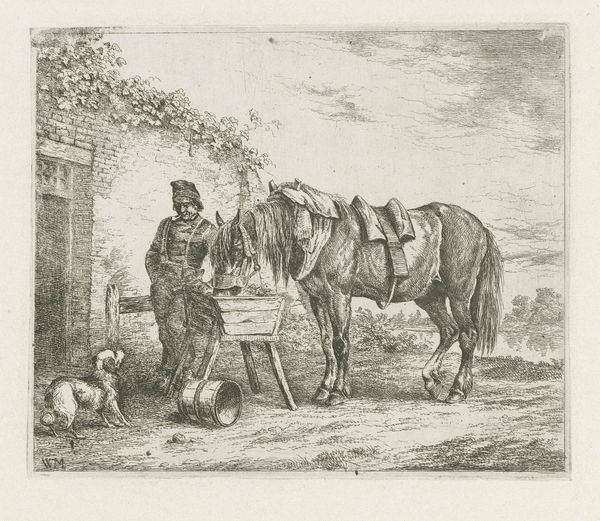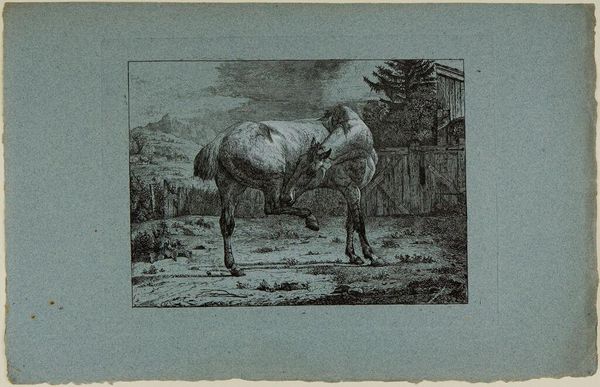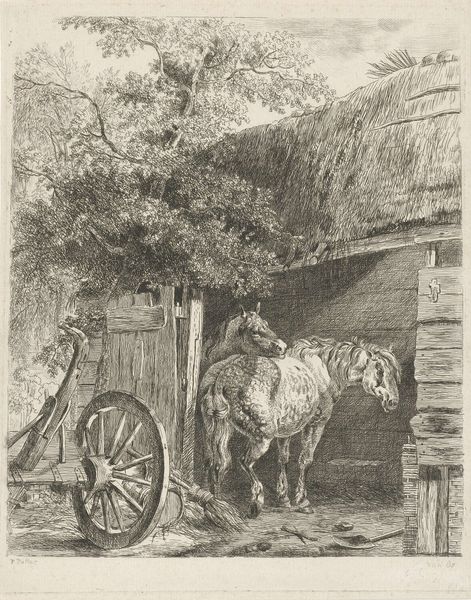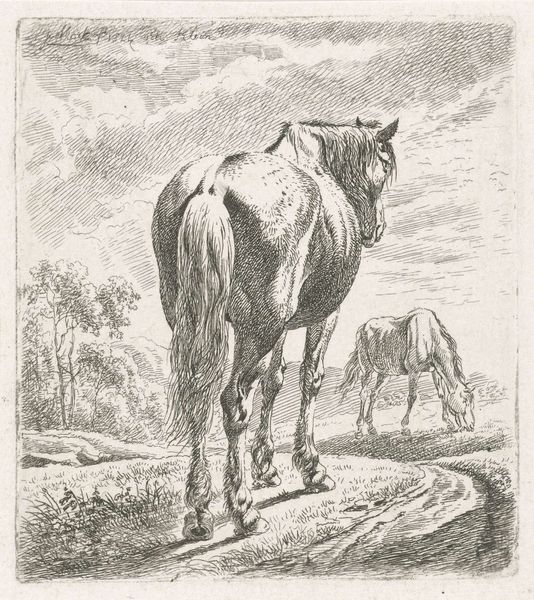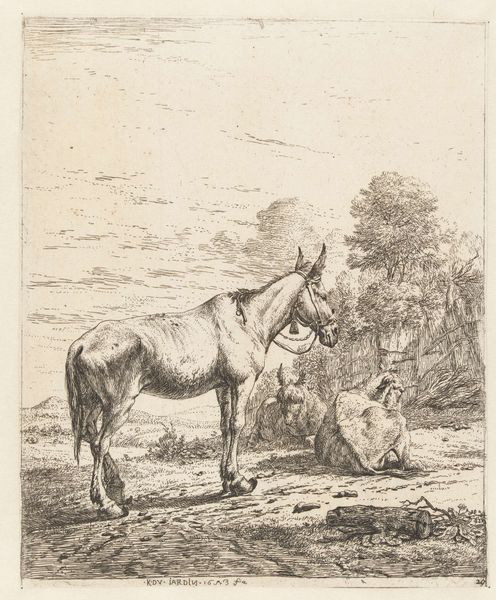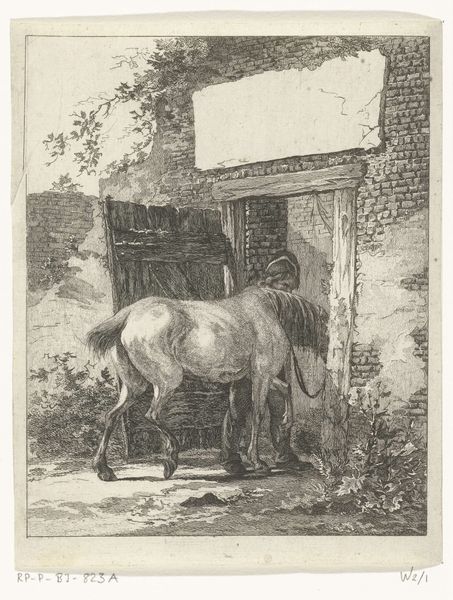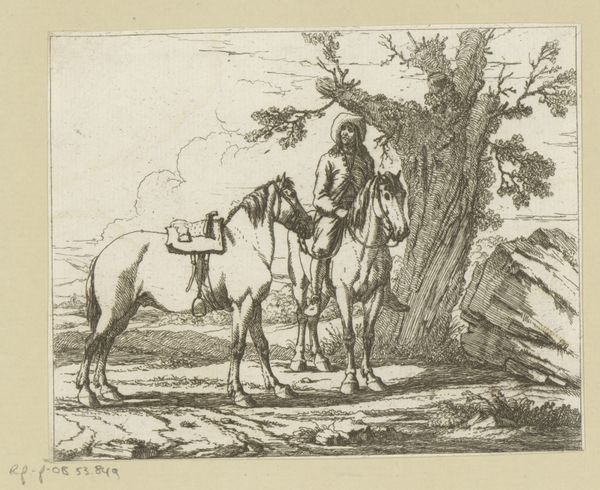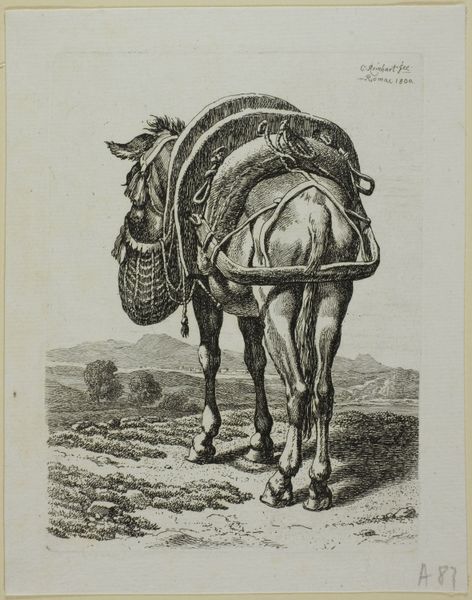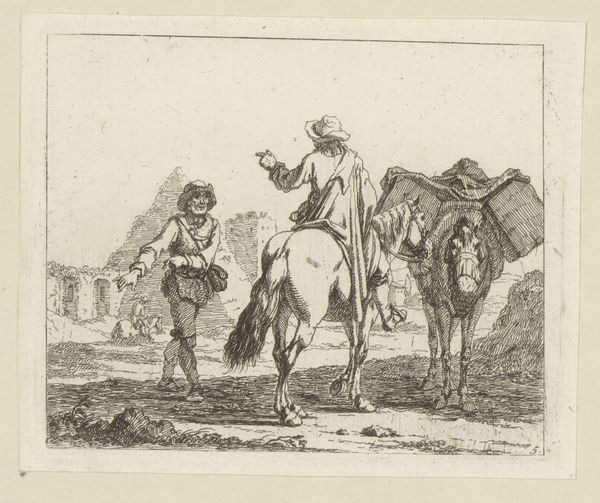
drawing, etching
#
pencil drawn
#
drawing
#
light pencil work
#
pen sketch
#
etching
#
pencil sketch
#
landscape
#
personal sketchbook
#
sketchwork
#
pen-ink sketch
#
sketchbook drawing
#
pencil work
#
genre-painting
#
sketchbook art
#
realism
Dimensions: height 93 mm, width 110 mm
Copyright: Rijks Museum: Open Domain
Editor: Here we have Jacobus Cornelis Gaal’s etching, "Trekos met juk voor de stal", made sometime between 1851 and 1857. It depicts an ox, yoked, standing in front of what appears to be a stable. It’s quite a simple scene, almost unremarkable. What stands out to you? Curator: The materials immediately draw my attention. This is an etching, a process involving acid to cut lines into a metal plate. Consider the labor involved: preparing the plate, meticulously drawing the image, applying acid, and then finally, printing. This isn't just about representing a rural scene; it's about the means of its production, the act of creating. How might this detailed craft contrast with the simplicity of the subject itself? Editor: I see your point. It’s almost an ode to labor, even in its creation. The image is mundane, but the production isn’t. I hadn’t considered that contrast. Does the artist's choice of etching elevate the subject matter in some way, turning the mundane into something worthy of such intricate work? Curator: Exactly. By investing so much labour in depicting something as commonplace as a yoked ox, Gaal draws attention to the value, the essential work involved. He might even be commenting on the shift in societal attitudes towards manual labor brought on by the Industrial Revolution, making us re-evaluate traditional crafts and the working class's representation. Editor: It’s almost as if the medium is the message, then? This work speaks to the value and dignity of labor, both in the depicted scene and the act of creation. Curator: Precisely. By making us consider the process and the materials, Gaal bridges the gap between high art and the everyday experience of work, materiality and consumption, forcing us to consider our own values in the face of these societal shifts. Editor: This piece feels very different now. Thanks to the way the artwork was manufactured, the labor connects to our social views surrounding the art and labor itself. Curator: It shifts our perspective doesn’t it? Thinking about art as both a product and a record of human effort enriches our understanding.
Comments
No comments
Be the first to comment and join the conversation on the ultimate creative platform.

